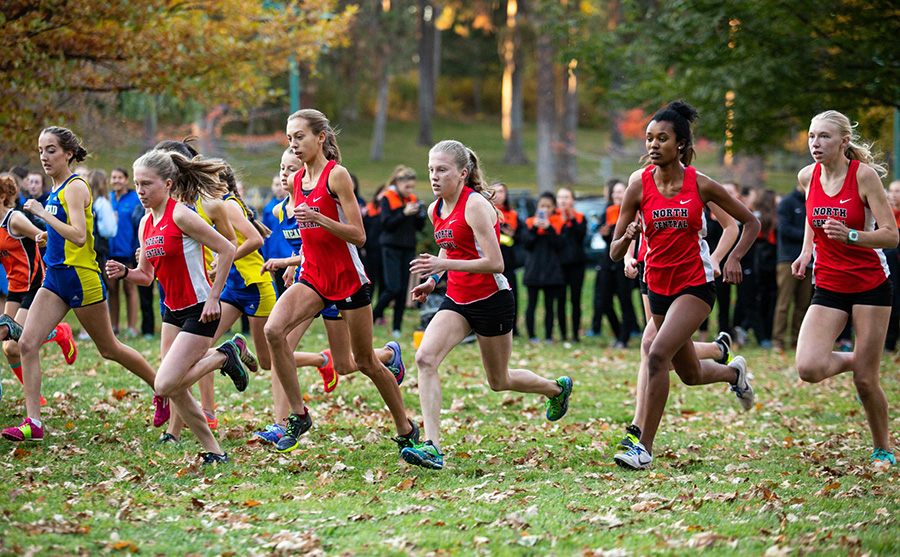The report provides a deeper understanding of sport participation disparities across youth gender, age, race/ethnicity, family socioeconomic background, and region, as well as illuminates the attitudes and influence of parents. It also shines an informative, comparison/contrast spotlight on the sports experience for girls versus boys, and provides recommendations to keep more girls in the game.
…
Based on a national survey of girls and boys (N=3,041) between the ages of 7-to-17 and their parents (N=3,041), the report uncovered the following and offers recommendations, including but not limited to:
- Gender disparities: Girls were more likely to have never played (43.1 percent girls vs 34.5 percent boys) and less likely to be currently playing sports (36.4 percent girls vs 45.6 percent boys).
- Finding new and creative ways to promote opportunities in a wide variety of sports, including non-traditional sport pathways, intramural programs and activity clubs, can help encourage more girls to participate.
- Gender stereotypes: A third of parents (32.2 percent) endorsed the belief that boys are better at sports than girls, regardless of whether their child is currently playing, dropped out, or never played.
- Parents can support their daughters’ sports participation in many powerful ways, both emotional (e.g., sharing positive beliefs and attitudes toward sports, attending games, practicing with their daughters) and tangible (e.g., buying equipment, providing transportation.)
- Limited exposure to female role models in sports: Two-thirds of all current players (68 percent) reported having a male coach and/or male assistant coach. Further, parents provided minimal encouragement to their daughters to follow sports figures (only 13 percent of current girl players’ parents and 11 percent of dropped out girls).
- Encouraging more moms to get involved in their daughters’ teams at the coaching level, and parents to encourage and join their daughters in following collegiate and professional women’s teams and athletes, can have a profound impact on girls’ aspirations in both participation and professional sports careers.
- Sports’ influence on academic achievement: There is substantial evidence of the positive impact of sports on academic achievement, yet 30 percent of youth and their parents reported a need to focus more on studying and grades as a primary reason to drop out of sports. And well over half of sport dropouts (55 percent) and three-quarters of their parents (73 percent) felt that sports can get in the way of academics.
- Helping parents understand the positive correlation between sport experience and academics can help quell distraction concerns and further bolster youth’s educational experience overall.
- Cost is a major barrier: African American youth and youth from low-income households ($0–$49,999) were least likely to be current players (34.9 percent and 27.7 percent respectively) and most likely to have never played sports (49.1 percent and 53.9 percent respectively) compared to others in the study. These disparities were especially prominent for girls within low-income homes (24.6 percent current players, 57.5 percent never played) and/or African American families (28.3 percent current players, 54.5 percent never played). Likewise, sport drop-out rates were higher among youth from low-income households (39.9 percent) compared to families of higher income ($100,000 or higher; 29 percent).
- More funding is needed to enable low-income youth and girls of color to fully participate in sport at rates equal to their other peers. Sports organizations can help address this by reaching out to stakeholders in their local community for fundraising support; show local companies how sponsoring girls’ sports aligns with their commitment to their community.
…
Since 2014, Dick’s and The Dick’s Foundation have pledged more than $100 million to support youth sports teams and leagues in need.
“Our research partnership with the Women’s Sports Foundation has helped us to understand the barriers of girls’ participation in sports and has motivated us to continue to support girls’ sports programs,” said Aimee Watters, executive director of The Dick’s Foundation. “In celebration of Women’s History Month, and in support of the research findings, we are proud to support underserved girls programs throughout the country.”
Proceeds from Dick’s newly released exclusively designed International Women’s Day ‘Empower Her’ collection of running shoes and accessories, will go to such programs.
The Keeping Girls in the Game report is the latest example of WSF initiatives taking direct aim at closing the sports gender equity gap. Earlier this year the Foundation launched The Equity Project, individuals and organizations working collectively to impact participation, policy, representation, and leadership in sustainable and measurable ways.
“The Women’s Sports Foundation is resolute in our mission to ensure that all girls and women have equitable access to sport and physical activity, as a means to the power, potential and joy it will unlock in their lives,” said WSF CEO Deborah Antoine. “Having a clearer understanding of the factors that keep girls on the sidelines is critically important. We greatly appreciate our partnership with The Dick’s Sporting Goods Foundation. Their support of our research amplifies our shared goal to help girls across the country gain equal access and opportunity to play. And everyone benefits when more girls are in the game.”
The Keeping Girls in the Game report is one of the first studies of its kind to examine the processes that influence youth sport involvement. Research has shown that sports and physical activity support youth development, spurring physical and mental health and well-being, healthy lifestyle habits, skill mastery, and academic achievement. And yet, participation rates are notably lower among girls, putting them at a disadvantage. WSF believes the need for a more supportive sports ecosystem for girls—access to programs and equipment, exposure to female role models including individual star athletes and teams as well as coaches competing and achieving, parental understanding and encouragement of their girls to get and stay in the game—is vital. And many across that ecosystem can help make a difference.
To learn more and download the Keeping Girls in the Game: Factors that Influence Sport Participation report, visit womenssportsfoundation.org/articles_and_report/keeping-girls-in-the-game/.
Photo courtesy North Central girls cross country team, Spokane, WA, The Spokesman-Review
















